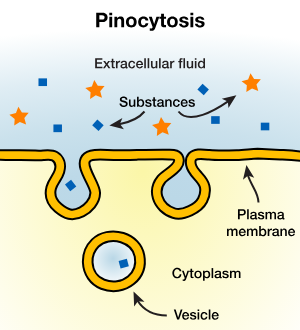L5. Capillaries and Lymphatic vessels
1/18
There's no tags or description
Looks like no tags are added yet.
Name | Mastery | Learn | Test | Matching | Spaced |
|---|
No study sessions yet.
19 Terms
Capillary structure
single endothelial cell layer laid upon a basement membrane: diameter range= 4 - 10um
Three types according to inter-endothelial cell distance: continuous, fenestrated and discontinuous
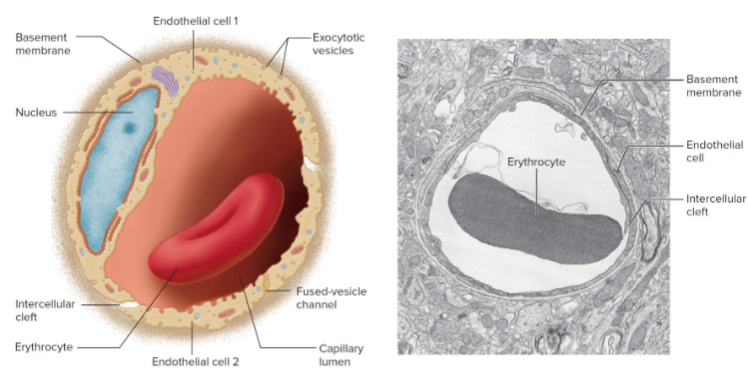
Starling principle → Capillary fluid exchange
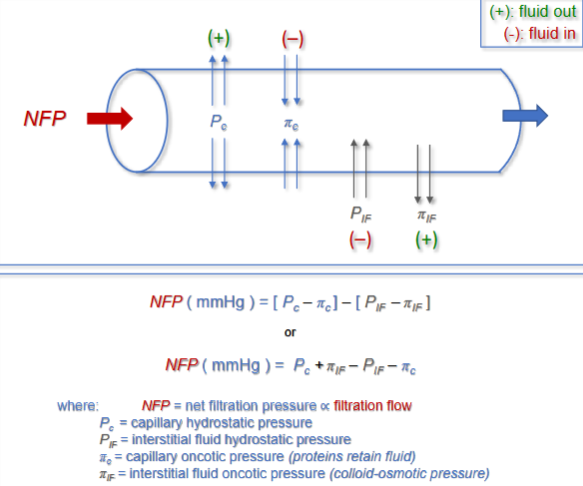
Net filtration pressure
Capillaries at the venous side have been considered as the only site where fluid absorption occurs.
More recent measurement techniques show that filtration occurs along the entire length of capillaries (whilst excess filtrate is drained by lymphatics): this is true as long as hydrostatic capillary pressure is sufficient to keep NFP at a positive value.
Overall, low Pc favours fluid absorption as it occurs in the intestinal mucosa and peritubular renal capillaries.
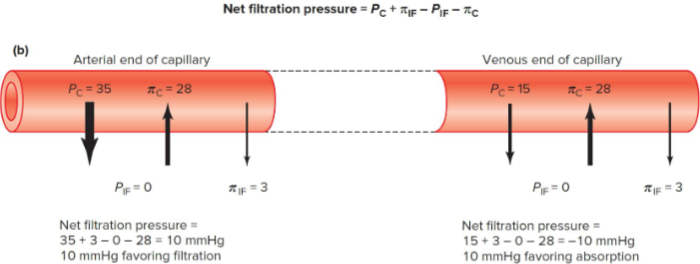
Skin capillaries at cardiac level (standing)
Most sites wherein net inflow does not equal net outflow leave a residual amount of fluid in the interstitium.
Lymphatic vessels converge into lymph nodes, involved in filtering and immune surveillance, thus recovering ‘spillover’ flow from the capillary network.
Excess filtrate is then returned into the circulation via lymphatic vessel absorption and drainage onto the thoracic veins.
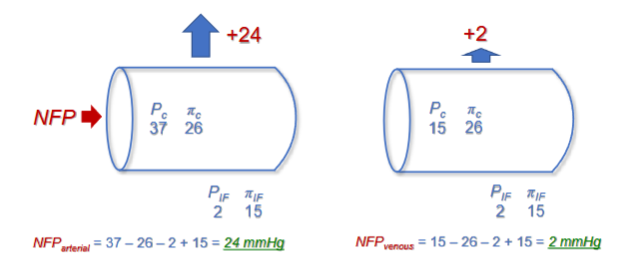
Lymphatic system
Lymphatic capillaries contain a single layer of lymphatic endothelial cells (LECs), bearing large intercellular spaces and a discontinuous basement membrane.
They drain onto collecting vessels endowed with smooth muscle, undirected valves and LECs
Lymph is propelled towards the thoracic duct and veins through intermittent compression (skeletal muscle activity, intrathoracic and intra-abdominal pressure charges)
Lymphatic capillary permeability allows the passage of fluid, macromolecules and cells
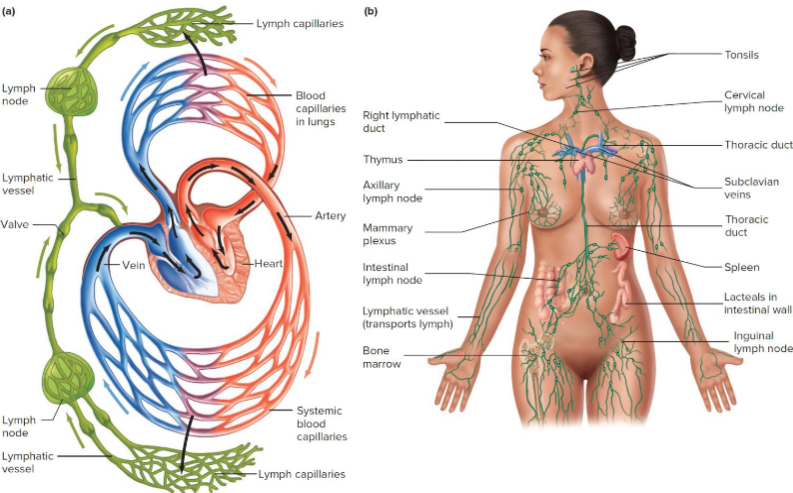
Primary tumours
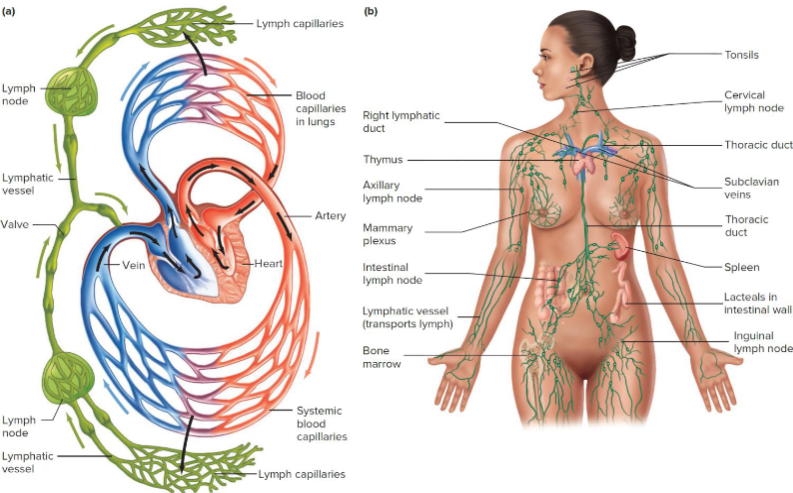
Interstitial accumulation of fluid: Edema
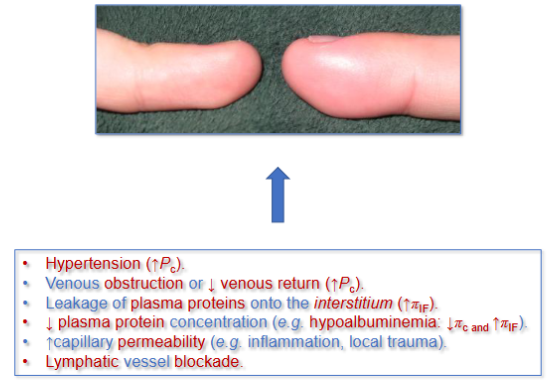
Transcapillary solute exchange
Permeability for a given molecule depends upon lipid solubility (hydrophobicity) and size (molecular weight)
‘‘The more lipophilic and small a molecule is, the higher its permeability will be.’’
Solutes fall into one of the three categories:
lipid soluble
Small hydrophilic
Large hydrophilic
Transcapillary solute exchange occurs mostly via diffusion in favour of concentration gradients
Notable exception is the brain, where continuous, impermeable capillaries utilize transporter-mediated facilitated diffusion (especially glucose): blood-brain barrier.
Lipid soluble molecules diffuse through the endothelial cell membrane
Lipid insoluble molecules (hydrophilic or water-soluble) require water-filled channels to allow transcapillary diffusion.
Transcapillary solute exchange diagram
Lipophilic molecules via endothelial cell membranes
Small hydrophilic molecules diffuse through aqueous channels and convective transport (solvent drag)
Large hydrophilic molecules diffuse through vesicles and caveolar transcellular transport.
Total capillary length in an adult human can reach 40,000km (4 × 10^7m).
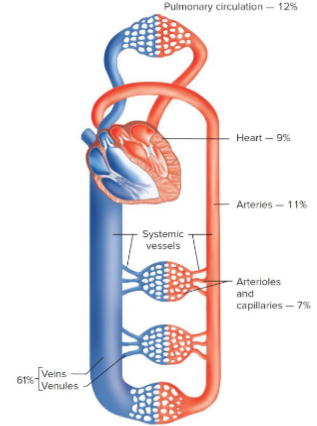
Hydrophilic transcapillary transport via vesicles
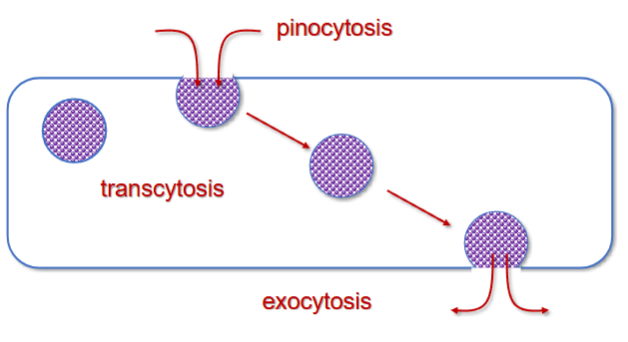
Hydrophilic transcapillary transport via caveolae
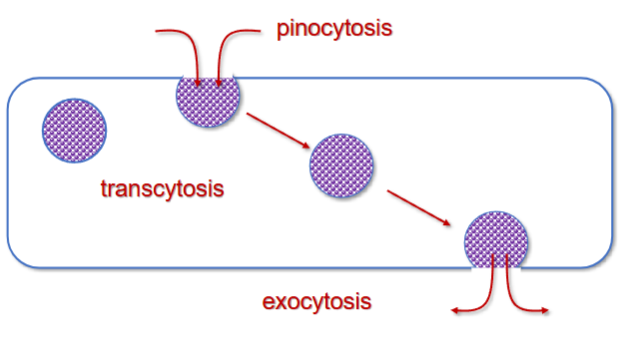
Fibre matrix hypothesis: glycocalyx decreases the width of junctions and fenestrae
Macromolecular meshwork of membrane glycolipids and glycoproteins
Reduces the effective width of junctions and fenestrations
Effective pore size is determined by steric hindrance, electrostatic interactions and interfibre spacing determines effective pore size.
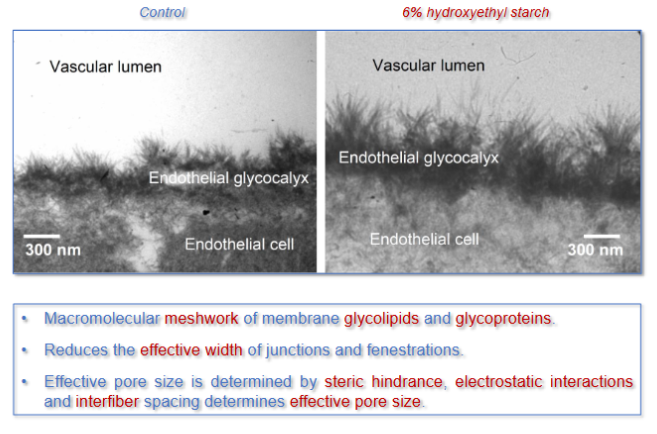
Arteries
Thick walled, muscular, high pressure (large elastic, windkessels)
Regulate pressure and flow (small arteries and arterioles)
Vein
Valves to prevent backflow, thing walls, collapsible
Low pressure capacitance system
Capillaries
Extremely thin walls
Exchange vessels
Maximised transmural diffusion
Transcytosis
The vesicular transport of macromolecules from one side of a cell to the other.
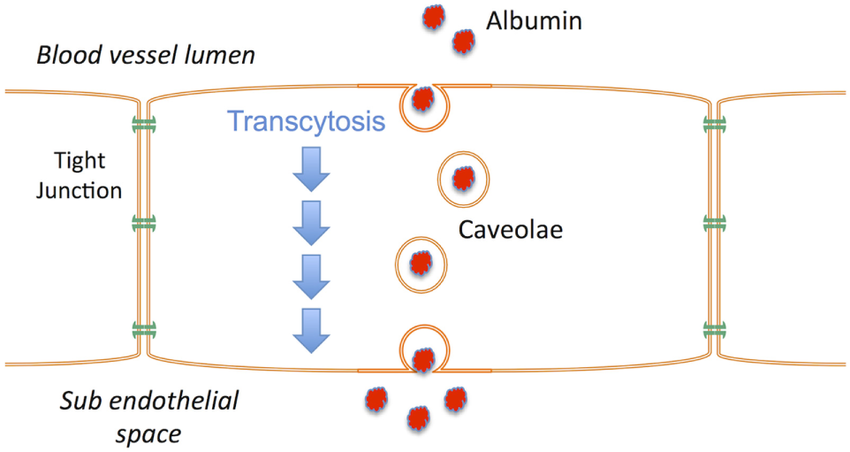
Endocytosis
A process where cells take in substances from outside the cell by engulfing them in a vesicle

Exocytosis
a process for moving large molecules out of the cell to the cell exterior
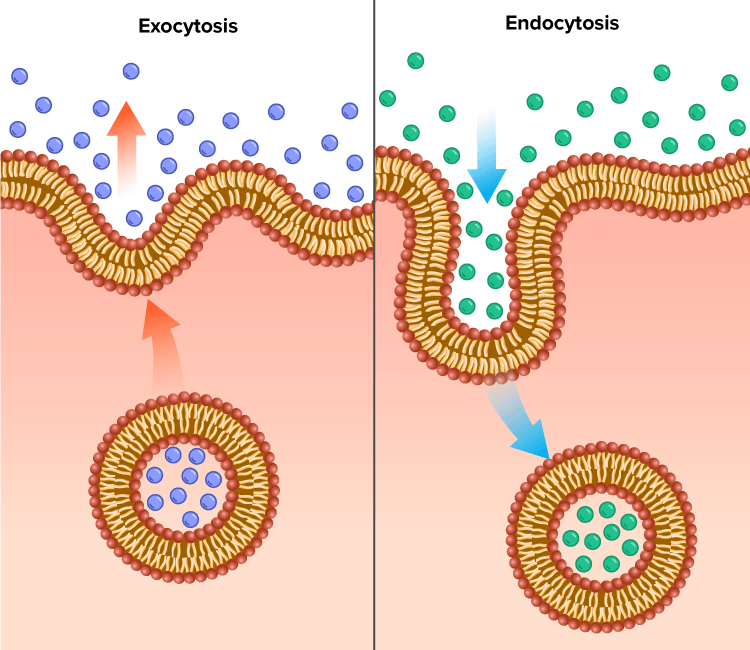
Pinocytosis
A form of endocytosis where the cell membrane folds inwards around the fluid and forms vesicles, and also breaks down particles
